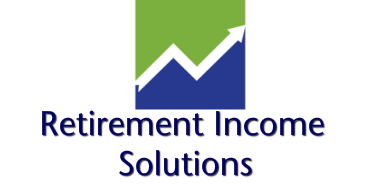When you read about money matters, you will sometimes see the phrase, “getting your financial house in order.” What exactly does that mean?
When your financial “house is in order,” it means it is built on a solid foundation. It means that you have six fundamental “pillars” in place that are either crucial for sustaining your financial well-being or creating wealth.
#1: A savings account. This is your Fort Knox: the place where you store and build the cash you may someday use for your biggest purchases. Savings accounts pay a modest interest rate. You should still consider having a savings account, even in today’s low-interest rate environment. Banks and credit unions often limit the number and amount of withdrawals you can make from savings accounts per month.
#2: A checking account. This is your go-to account for everyday expenses, whether you pay your bills digitally or the old-fashioned way. Checking accounts pay a modest interest rate. Some accounts may have minimum balance requirements, so it’s best to closely read the new account information. Also, opening a checking account may lead to opening a credit card account at the same financial institution.
#3: An emergency fund. This bank account helps you deal with the unexpected. You know that label you see on fire extinguisher boxes – “break glass in case of emergency?” Only in a financial emergency should you “break into” this account. What is a financial emergency? Everyone’s definition varies, but examples include hospital bills, major car repairs, and unemployment.
#4: A workplace retirement plan account. Some want to start saving for retirement as soon as possible. Workplace retirement plans offer you a convenient way to get started. In most of these plans, your contribution is made with pre-tax dollars.1
Money saved and invested in these accounts can compound, and the compounding may become greater with time. Consistent monthly investment is the “fuel” for your account.
Regular monthly investing does not protect against a loss in a declining market or guarantee a profit in a rising market. Individuals should evaluate their financial ability to continue making purchases through periods of declining and rising prices. The return and principal value of stock prices will fluctuate as market conditions change. Shares, when sold, may be worth more or less than their original cost.
#5: An Individual Retirement Arrangement (IRA). This is a tax-advantaged retirement savings account that you own. There are traditional IRAs (up-front contributions are not taxed; retirement withdrawals are) and Roth IRAs (up-front contributions are taxed; retirement withdrawals are not, provided federal tax laws are followed).2
Mandatory annual withdrawals are required from traditional IRAs starting at age 72. The money distributed to you is taxed as ordinary income; if such distributions are taken before age 59½, they may be subject to a 10% federal income tax penalty. No mandatory annual withdrawals are required from Roth IRAs while the original owner lives. To qualify for the tax-free and penalty-free withdrawal of earnings, Roth IRA distributions must meet a five-year holding requirement and occur after age 59½. Tax-free and penalty-free withdrawal can also be taken under certain other circumstances, such as the owner’s death. The original Roth IRA owner is not required to take minimum annual withdrawals.
Thanks to the SECURE Act, you may contribute to Roth and traditional IRAs all your life, as long as you meet the earned-income requirement for account contributions.2
#6: A taxable investing account. This is also popularly called an investment account or brokerage account. Unlike an IRA or workplace retirement plan, the invested assets in these accounts are taxed each year. A taxable investing account gives you access to a wide range of investment products, which can help complement the other accounts in your financial foundation.
Contact me with questions or comments.
 Damian J. Sylvia
Damian J. Sylvia
Retirement Income Solutions
Office: 732-508-6044
Direct: 732-284-0902
Email: Damian@MyFinancialSolution.org
Website: RetirementSolutionsNJ.com
Sources:
- Tax Policy Center, May 2020
- Internal Revenue Service, November 10, 2020

